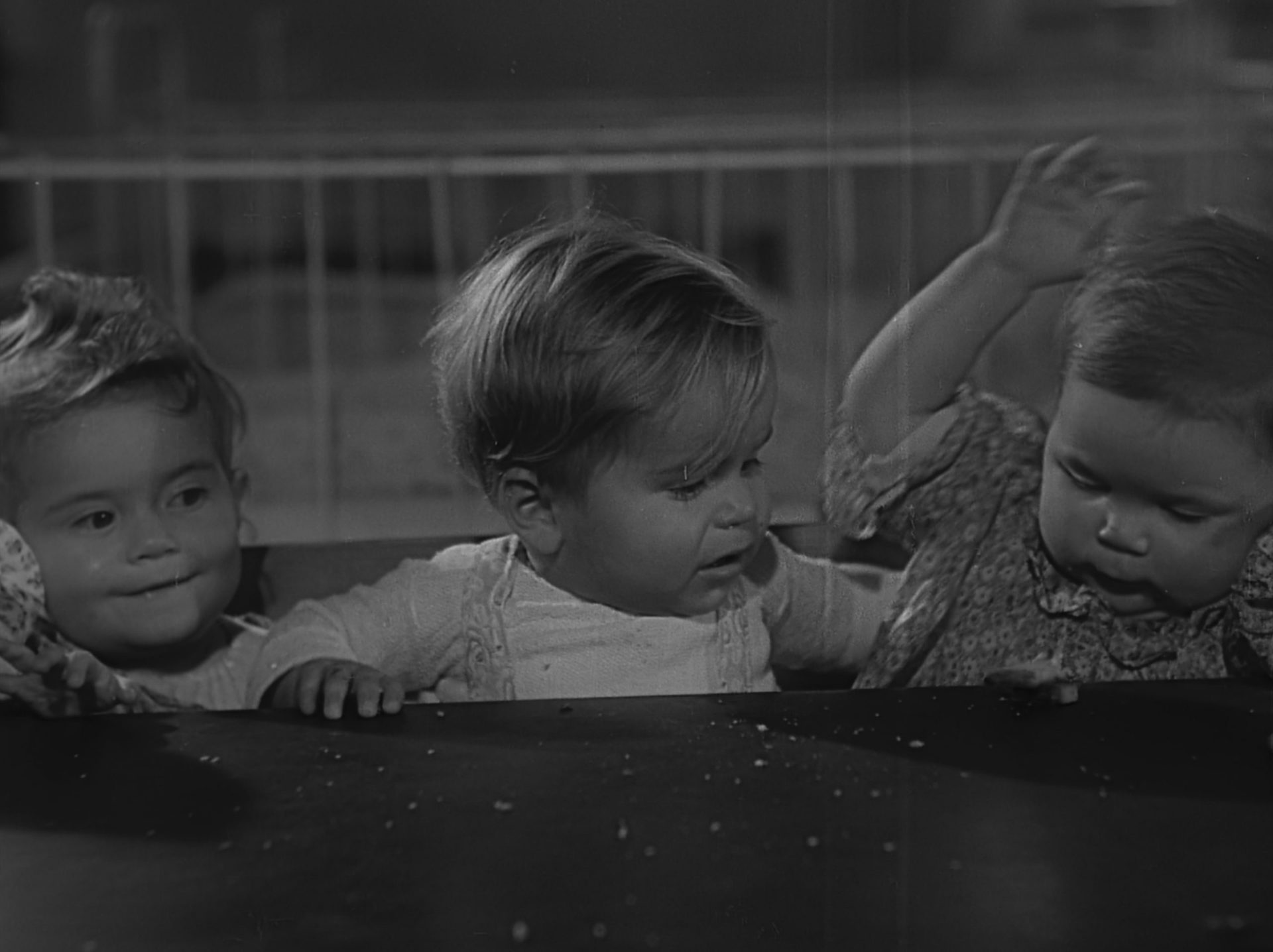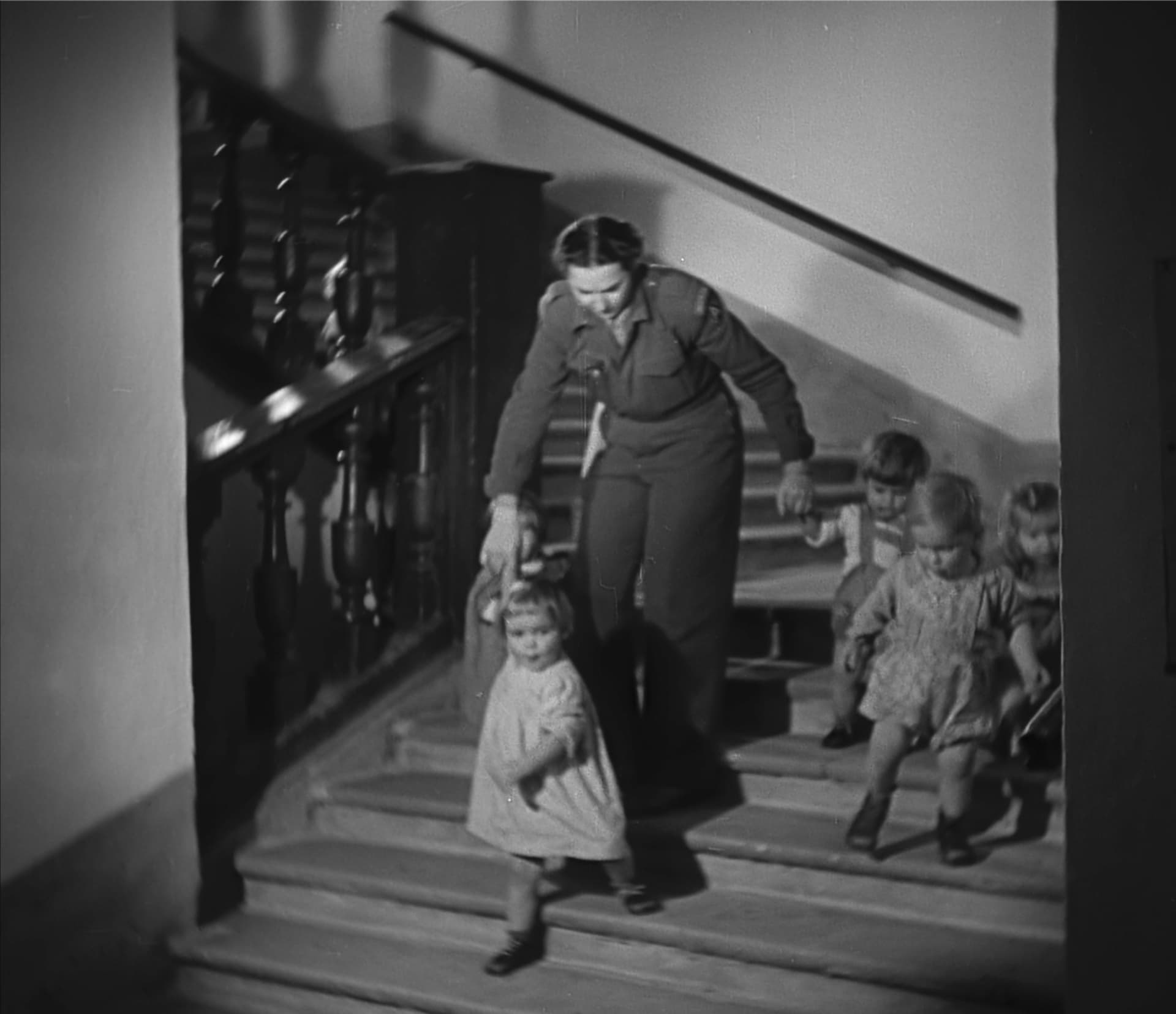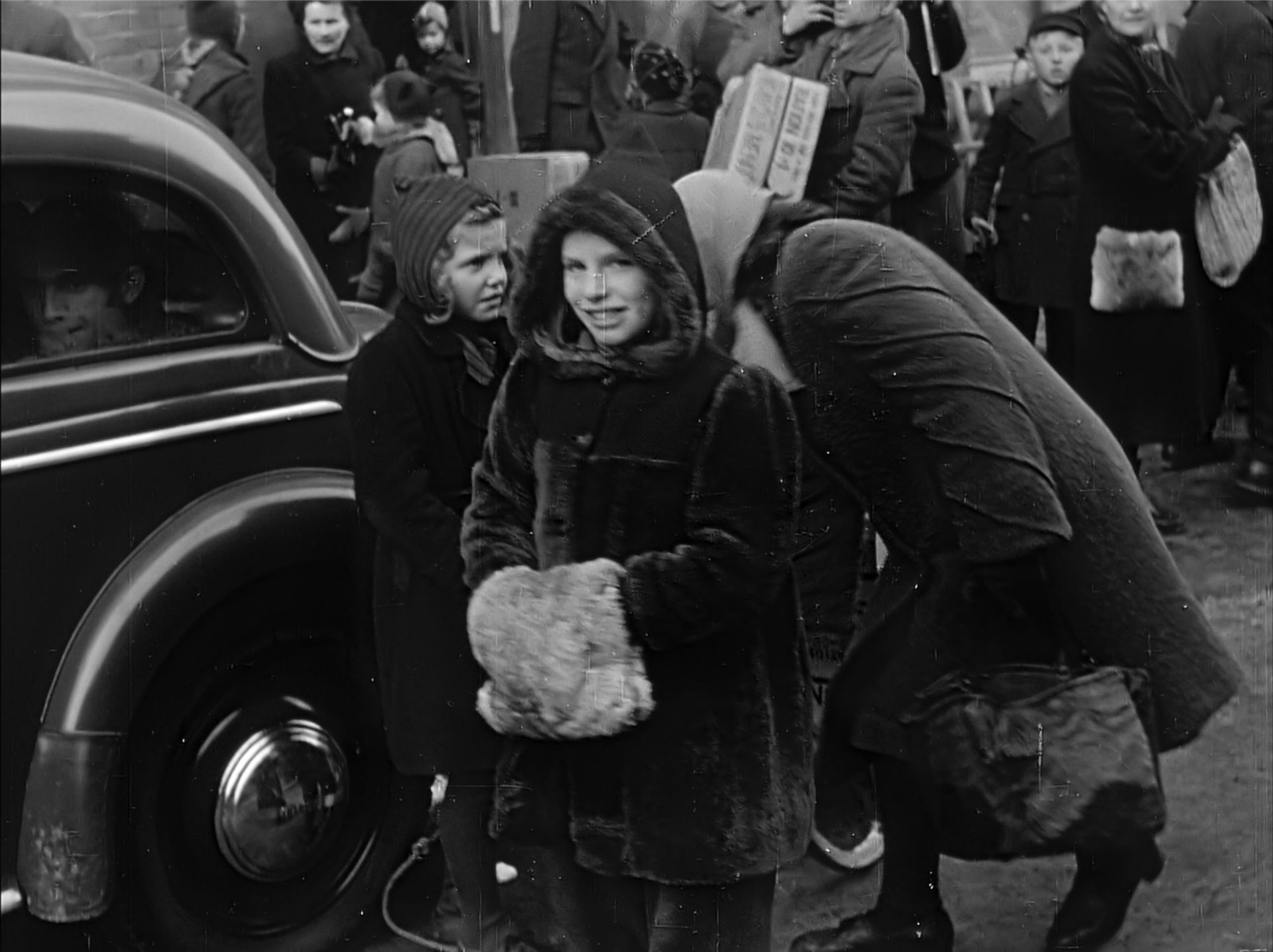The orphans of Dachau
In the summer of 1945 the newsreel of the American occupation zone shows a film “The Orphans of Dachau” about the camp Kloster Indersdorf in the district of Dachau, which had been set up for surviving orphans from Nazi concentration camps. The short film shows how in 1945 a humane treatment of the victims of war and terror could be organized. And today? What the conditions on Lesbos 75 years later have to do with these film images.
The United Nations Relief and Rehabilitation Association, UNRRA, begins to care for children and young people who survived in the concentration camps but lost their parents immediately after the war. They are given a first new home in reception centres such as the Markt Indersdorf monastery. The orphans of Dachau.
The fate of these children, who were abducted by the Nazi regime and literally came from hell, is unique, as the following horrible pictures from Dachau from May 1945 show.
Help for the orphans from concentration camps
Traumatized, half-starved and completely apathetic, the children and young people in Dachau and other concentration camps had survived terror, typhus epidemics and hunger. The film “The Orphans of Dachau” about Indersdorf was shot by Hanus Burger. Hanus Burger was also one of the first cameramen of the US Army to film in April 1945 in the concentration camps that had just been liberated.
In the film the children show the tattoo “KL” on their forearm. “KL” stands for “concentration camp” in the files of the Nazi bureaucracy. So they are truly children who have come from hell. The film shows all the more how quickly a return to an almost normal and even a little bit happy life can be achieved if good care is organized. Compassion and humanity let new courage to live arise “playfully”. The pictures show how the well-organized support of the children and the observance of hygienic and social standards helps them to forget the horror and to enjoy their lives again.

The woman in uniform in the film is Greta Fischer. She worked for the UNRRA and took care of the medical and psychological care of refugee children. In July 1945 Greta Fischer became the director of the first international children’s centre of the US zone in Indersdorf.

Another aspect is the environment in which Greta Fischer and the United Nations worked. Her chance was given to orphans in a country destroyed by war. The following film shows how it looked like in Munich in the summer of 1945. Millions of German civilians had been bombed out and had to be taken care of.
CARE Aid for the German population
The situation for the German population in the bombed cities was extremely difficult. The burdens of the war now hit the surviving people with full force. But international helpers also became active for them, among them the many followers and civilian supporters of the Nazi regime.
With the oncoming winter of 1945, the situation in Germany and other European countries became catastrophic. On November 27, 1945, 22 American welfare organizations founded the “Cooperative for American Remittances to Europe”, or C.A.R.E. for short. Even before Christmas, the distribution of the famous Care packages began. Such a 15 kilo package contains the need for important food elements for one month. The campaign saves the lives of many children. 100 million packages will be distributed throughout Europe. Almost ten million CARE packages with food, clothing or tools reach Germany alone.
The CARE packages have helped many German families – whether they are followers or perhaps supporters of the Nazi regime – to survive and make a new start. Thousands of volunteers all over the world made this campaign a great success. The German people were not ostracized, but people in need were tried to help.
When the German people were in a nearly hopeless situation after the war, people all over the world organized help. If we compare our situation today with the situation of the people in the pictures of 1945, we do not need to ask for long why we can and must manage to help people in need in the Middle East and elsewhere.

Lesbos: “Too few toilets, too few washing facilities: It leaves me stunned.”
The conditions in the refugee camp on the Greek island of Lesbos are described by the German doctor Gerhard Trabert in an interview with ZDF. About 7,000 refugee children live in the Moria camp alone. About 1,000 of them are unaccompanied minors.
The difficulties of the refugee children today and their needs are very similar to those of the orphans from Dachau. Since December 2019 alone, 900,000 people have been displaced from the Idlib region in Syria. They have lost everything and urgently need protection, food, water and medical assistance.
On Lesbos, the refugees are vegetating in overcrowded camps under inhuman conditions. Among them are thousands of unaccompanied orphans. We must not forget these children and must finally offer them comparable help.
Donation should be made to UNHCR directly.

Leave A Comment